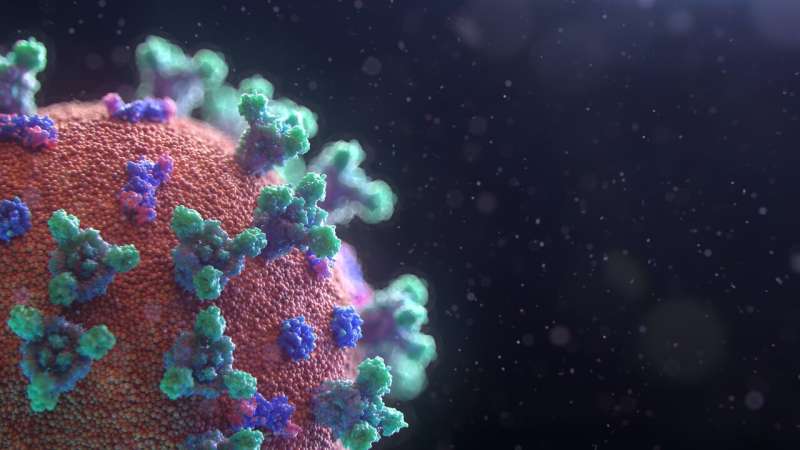
Scientists at Cardiff University have discovered a unique way to target a common virus that affects one in 200 newborn babies in the UK but for which there is only limited treatments available.
Human cytomegalovirus (HCMV) is a master at ‘hiding’ from the body’s immune system so antibodies and T-cells cannot attack it as they do in other viruses, like the current coronavirus.
The researchers have now discovered a new type of antibody in the lab which—instead of killing the virus directly—marks infected cells so the immune system can ‘see’ them.
Once the immune system can see the infected cells it is able to kill the virus.
The team have submitted a patent for the unique immunotherapeutic and hope it can help to treat HCMV, which can leave newborn babies severely disabled or even kill them.
Further work is needed to make sure it is safe and effective in humans—but the researchers hope the technique could eventually be used to fight other infectious diseases and the method they used to find the new antibody could be applied to cancer.
The study is published today in the Journal of Clinical Investigation.
Lead author Dr. Richard Stanton, a virologist from Cardiff University’s Division of Infection and Immunity, said: “HCMV is a major challenge because it has evolved a range of different techniques to avoid the body’s own immune response.
“We have developed a really unique way of letting the immune system see the virus so it can get on with its task of killing it.”
HCMV causes lifelong infection in humans and is a significant cause of severe disease or death in immunocompromised individuals, such as those undergoing transplants or people with HIV.
A vaccine is paramount to fighting the virus, particularly for tackling congenital disease, however there is currently no vaccine and only limited treatment options are available.
In this study, the researchers looked at whether antibody-dependent cellular cytotoxicity (ADCC)—a particular type of immune response in which a target cell is coated with antibodies and killed by immune cells—could be exploited for therapeutic use.
They used a special technique (proteomics) to characterize the molecules found on the surface of the infected cell and combined this with immunological screening to identify targets for ADCC.
They found a unique target expressed early in the virus’s lifecycle and were then able to develop human antibodies for use against this target.
In the lab, this brought about a potent activation of ADCC, killing the infected cells.
“The identification of novel ADCC targets not only opens up a fuller understanding of natural immunity against HCMV that can be exploited for therapeutic benefit, but this could also now be applied to other infectious diseases—and the mechanism we used to pinpoint the new antibody could potentially also work in cancer,” said Dr. Stanton.
Source: Read Full Article